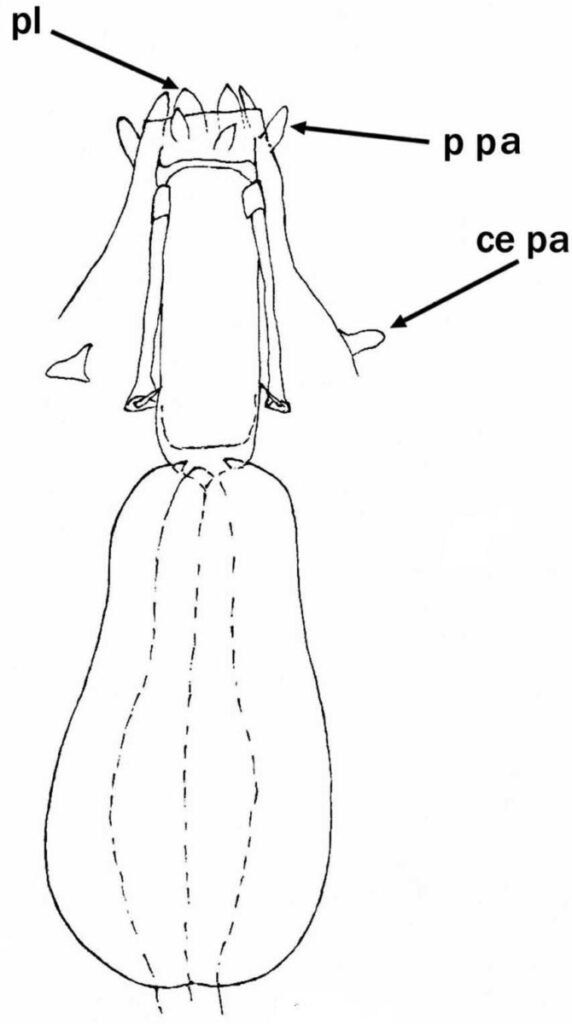Apochela, from Schuster et al. 1980: “…with cephalic papillae and claws with the primary and secondary branches distinctly separate.”
Apochela, from Bertolani et al. 2014: “Eutardigrada having claws with completely separated primary and secondary branches; papillae around the mouth (peribuccal papillae) and 2 lateral papillae on the head (cephalic papillae); elongated pharyngeal bulb completely without placoids.”
Milnesiidae, from Schuster et al. 1980: “…which has cephalic papillae and has claws with well-separated primary and secondary branches…”
Milnesium from Doyère 1840: “Téte portant à sa partie antérieure et latérale deux appendices palpiformes très courts; bouch terminée par une ventouse entourée de palpes. Peau molle, coupée transversalement par des sillons, en anneaux de formes variables. Quatre paires de pattes. Anneaux du tronc bisegmentés.”
Translated: Head bearing anteriolaterally two very short palpiform appendages; mouth closed by a sucker surrounded by palpi. Soft skin, cut transversely by furrows into rings of variable shapes. Four pairs of legs. Bisegmented trunk rings.
Milnesium from Ramazzotti & Maucci 1983: Milnesiidae; there are present six buccal lamellae and six large peribuccal papillae; buccal tube wide, short, rigid; stylet supports short, large; there are present stylet sheaths; pharynx without apophyses and placoids. Branches of the claws separate, the secondary branch short, two-part or three-part.




Citations:
Bertolani R, Guidetti R, Marchioro T, Altiero T, Rebecchi L, Cesari M. 2014. Phyloeny of Eutardigrada: New molecular data and their morphological support lead to the identification of new evolutionary lineages. Molecular Phylogenetics and Evolution. 76: 110-126.
Doyère LMF. 1840. Mémoire sur les tardigrades. Annales des Sciences Naturelles, 2me series. 14: 269-362.
Ramazzotti G, Maucci W. 1983. Il phylum Tardigrada(III edizione riveduta e aggiornata). English translation by C. W. Beasley, 1995. Memorie dell’ Istituto Italiano di Idrobiologia 41: 1-1012.
Schuster RO, Nelson DR, Grigarick AA, Christenberry D. 1980. Systematic criteria of the Eutardigrada. Transactions of the American Microscopical Society. 99: 284-303.















